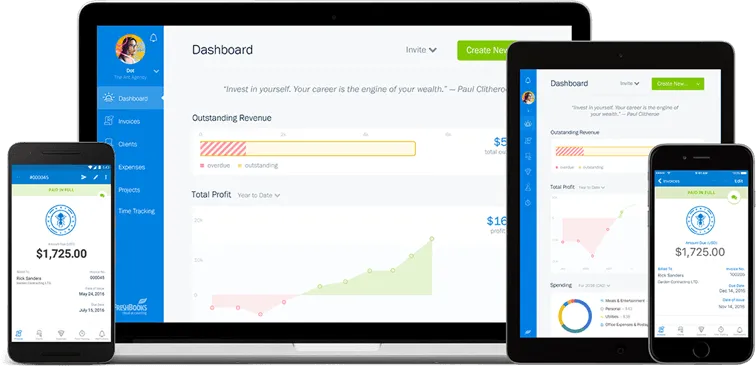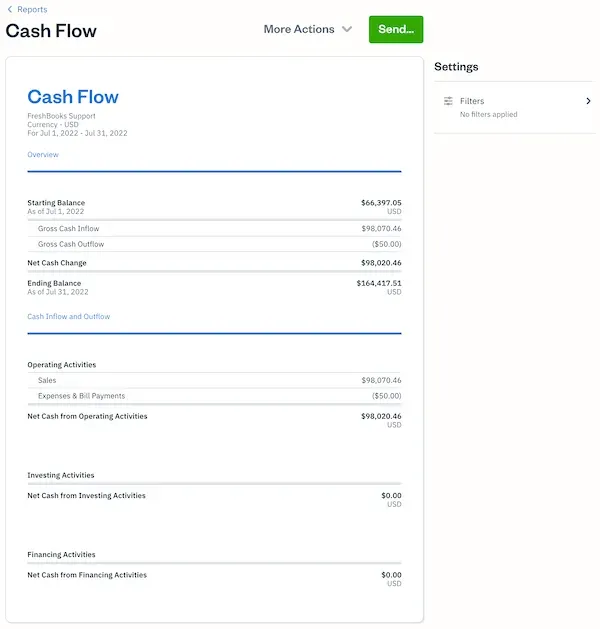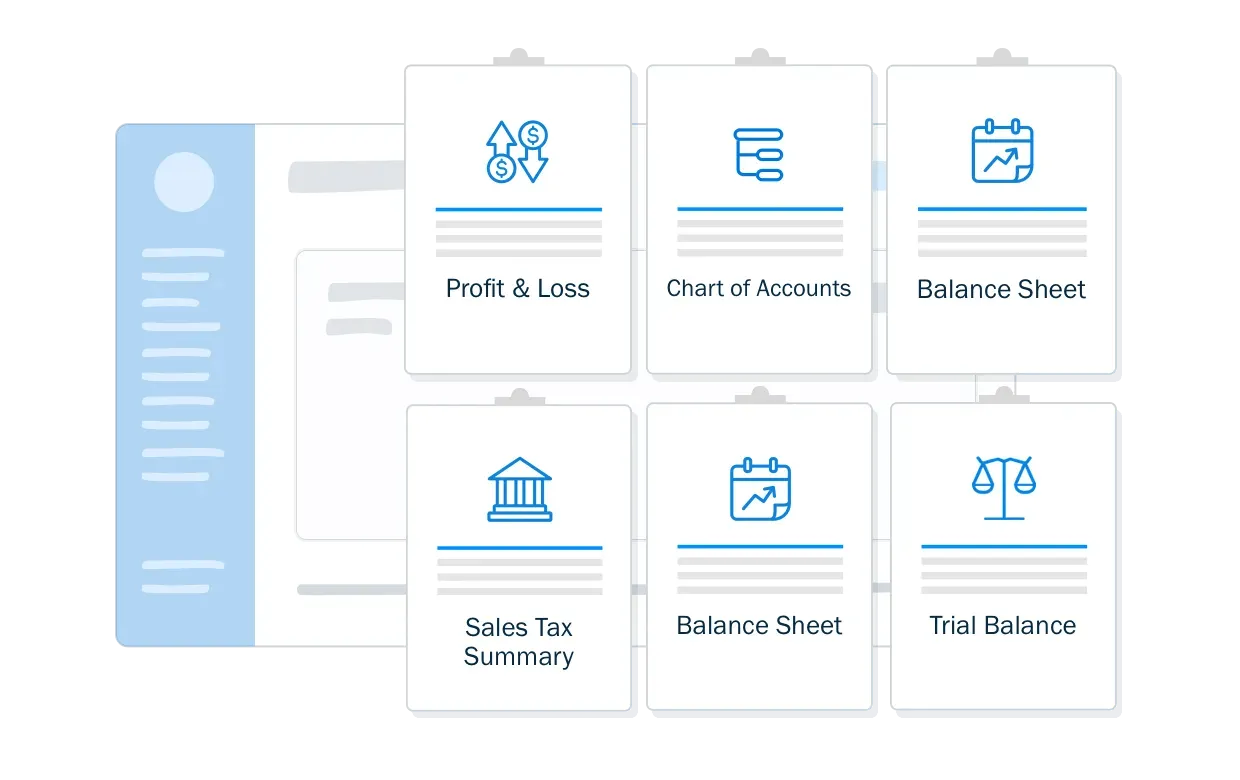How to Make Financial Projections for Business

Writing a solid business plan should be the first step for any business owner looking to create a successful business.
As a small business owner, you will want to get the attention of investors, partners, or potential highly skilled employees. It is, therefore, important to have a realistic financial forecast incorporated into your business plan.
We’ll break down a financial projection and how to utilize it to give your business the best start possible.
Key Takeaways
Accurate financial projections are essential for businesses to succeed. In this article, we’ll explain everything you need to know about creating financial projections for your business. Here’s what you need to know about financial projections:
- A financial projection is a group of financial statements that are used to forecast future performance
- Creating financial projections can break down into 5 simple steps: sales projections, expense projections, balance sheet projections, income statement projections, and cash flow projections
- Financial projections can offer huge benefits to your business, including helping with forecasting future performance, ensuring steady cash flow, and planning key moves around the growth of the business
Here’s What We’ll Cover:
What Is a Financial Projection?
How to Create a Financial Projection
What Goes Into a Financial Projection?
What Are Financial Projections Used for?
Financial Projections Advantages
What Is Financial Projection?
A financial projection is essentially a set of financial statements. These statements will forecast future revenues and expenses.
Any projection includes your cash inflows and outlays, your general income, and your balance sheet.
They are perfect for showing bankers and investors how you plan to repay business loans. They also show what you intend to do with your money and how you expect your business to grow.
Most projections are for the first 3-5 years of business, but some include a 10-year forecast too.
Either way, you will need to develop a short and mid-term projection broken down month by month.
As you are just starting out with your business, you won’t be expected to provide exact details. Most financial projections are rough guesses. But they should also be educated guesses based on market trends, research, and looking at similar businesses.
It’s incredibly important for financial statements to be realistic. Most investors will be able to spot a fanciful projection from a mile away.
In general, most people would prefer to be given realistic projections, even if they’re not as impressive.

How to Create a Financial Projection
Financial projections are created to help business owners gain insight into the future of their company’s financials.
The question is, how to create financial projections? For business plan purposes, it’s important that you follow the best practices of financial projection closely. This will ensure you get accurate insight, which is vital for existing businesses and new business startups alike.
Here are the steps for creating accurate financial projections for your business.
1. Start With A Sales Projection
For starters, you’ll need to project how much your business will make in sales. If you’re creating a sales forecast for an existing business, you’ll have past performance records to project your next period. Past data can provide useful information for your financial projection, such as if your sales do better in one season than another.
Be sure also to consider external factors, such as the economy at large, the potential for added tariffs and taxes in the future, supply chain issues, or industry downturns.
The process is almost the same for new businesses, only without past data to refer to. Business startups will need to do more research on their industry to gain insight into potential future sales.
2. Create Your Expense Projection
Next, create an expense projection for your business. In a sense, this is an easier task than a sales projection since it seems simpler to predict your own behaviors than your customers. However, it’s vital that you expect the unexpected.
Optimism is great, but the worst-case scenario must be considered and accounted for in your expense projection. From accidents in the workplace to natural disasters, rising trade prices, to unexpected supply disruptions, you need to consider these large expenses in your projection.
Something always comes up, so we suggest you add a 10-15% margin on your expense projection.
3. Create Your Balance Sheet Projection
A balance sheet projection is used to get a clear look at your business’s financial position related to assets, liabilities, and equity, giving you a more holistic view of the company’s overall financial health.
For startup businesses, this can prove to be a lot of work since you won’t have existing records of past performance to pull from. This will need to be factored into your industry research to create an accurate financial projection.
For existing businesses, it will be more straightforward. Use your past and current balance sheets to predict your business’s position in the next 1-3 years. If you use a cloud-based, online accounting software with the feature to generate balance sheets, such as the one offered by FreshBooks, you’ll be able to quickly create balance sheets for your financial projection within the app.
Click here to learn more about the features of FreshBooks accounting software.

4. Make Your Income Statement Projection
Next up, create an income statement projection. An income statement is used to declare the net income of a business after all expenses have been made. In other words, it states the profits of a business.
For currently operating businesses, you can use your past income statements and the changes between them to create accurate predictions for the next 1-3 years. You can also use accounting software to generate your income statements automatically.
You’ll need to work on rough estimates for new businesses or those still in the planning phase. It’s vital that you stay realistic and do your utmost to create an accurate, good-faith projection of future income.
5. Finally, Create Your Cash Flow Projection
Last but not least is to generate your projected cash flow statement. A cash flow projection forecasts the movement of all money to and from your business. It’s intertwined with a business’s balance sheet and income statement, which is no different when creating projections.
If your business has been operating for six months or more, you can create a fairly accurate cash flow projection with your past cash flow financial statements. For new businesses, you’ll need to factor in this step of creating a financial forecast when doing your industry research.
What Goes Into a Financial Projection?
It needs to include five elements to ensure an accurate, useful financial forecast for your business. These financial statements come together to provide greater insight into the projected future of a business’s financial health. These include:
Income Statement
A standard income statement summarizes your company’s revenues and expenses over a period. This is normally done either quarterly or annually.
The income statement is where you will do the bulk of your forecasting.
On any income statement, you’re likely to find the following:
- Revenue: Your revenue earned through sales.
- Expenses: The amount you’ve spent, including your product costs and your overheads.
- Pre-Tax Earnings: This is your income before you’ve paid tax.
- Net Income: The total revenues minus your total expenses.
Net income is the most important number. If the number is positive, then you’re earning a profit, if it’s negative, it means your expenses outweigh your revenue and you’re making a loss.
Cash Flow Statement
Your cash flow statement will show any potential investor whether you are a good credit risk. It also shows them if you can successfully repay any loans you are granted.
You can break a cash flow statement into three parts:
- Cash Revenues: An overview of your calculated cash sales for a given time period.
- Cash Disbursements: You list all the cash expenditures you expect to pay.
- Net Cash Revenue: Take the cash revenues minus your cash disbursements.

Balance Sheet
Your balance sheet will show your business’s net worth at a given time.
A balance sheet is split up into three different sections:
- Assets: An asset is a tangible object of value that your company owns. It could be things like stock or property such as warehouses or offices.
- Liabilities: These are any debts your business owes.
- Equity: Your equity is the summary of your assets minus your liabilities.

Looking for an easy-to-use yet capable online accounting software? FreshBooks accounting software is a cloud-based solution that makes financial projections simple. With countless financial reporting features and detailed guides on creating accurate financial forecasts, FreshBooks can help you gain the insight you need to let your business thrive. Click here to give FreshBooks a try for free.

What Are Financial Projections Used for?
Financial projections have many uses for current business owners and startup entrepreneurs. Provided your financial forecasting follows the best practices for an accurate projection, your data will be used for:
- Internal planning and budgeting – Your finances will be the main factor in whether or not you’ll be able to execute your business plan to completion. Financial projections allow you to make it happen.
- Attracting investors and securing funding – Whether you’re receiving financing from bank loans, investors, or both, an accurate projection will be essential in receiving the funds you need.
- Evaluating business performance and identifying areas for improvement – Financial projections help you keep track of your business’s financial health, allowing you to plan ahead and avoid unwelcome surprises.
- Making strategic business decisions – Timing is important in business, especially when it comes to major expenditures (new product rollouts, large-scale marketing, expansion, etc.). Financial projections allow you to make an informed strategy for these big decisions.
Financial Projections Advantages
Creating clear financial projections for your business startup or existing company has countless benefits. Focusing on creating (and maintaining) good financial forecasting for your business will:
- Help you make vital financial decisions for the business in the future
- Help you plan and strategize for growth and expansion
- Demonstrate to bankers how you will repay your loans
- Demonstrate to investors how you will repay financing
- Identify your most essential financing needs in the future
- Assist in fine-tuning your pricing
- Be helpful when strategizing your production plan
- Be a useful tool for planning your major expenditures strategically
- Help you keep an eye on your cash flow for the future

Conclusion
Your financial forecast is an essential part of your business plan, whether you’re still in the early startup phases or already running an established business. However, it’s vital that you follow the best practices laid out above to ensure you receive the full benefits of comprehensive financial forecasting.
If you’re looking for a useful tool to save time on the administrative tasks of financial forecasting, FreshBooks can help. With the ability to instantly generate the reports you need and get a birds-eye-view of your business’s past performance and overall financial help, it will be easier to create useful financial projections that provide insight into your financial future.
FAQs on Financial Projections
More questions about financial forecasting, projections, and how these processes fit into your business plan? Here are some frequently asked questions by business owners.
Why are financial projections important?
Financial projections allow you to gain insight into your business’s economic trajectory. This helps business owners make financial decisions, secure funding, and more. Additionally, financial projections provide early warning of roadblocks and challenges that may lay ahead for the company, making it easier to plan for a clear course of action.
What is an example of a financial projection?
A projection is an overall look at a business’s forecasted performance. It’s made up of several different statements and reports, such as a cash flow statement, income statement, profit and loss statement, and sales statement. You can find free templates and examples of many of these reports via FreshBooks. Click here to view our selection of accounting templates.
Are financial forecasts and financial projections the same?
Technically, there is a difference between forecasting and projections, though many use the terms interchangeably. Financial forecasting often refers to shorter-term (<1 year) predictions of financial performance, while financial projections usually focus on a larger time scale (2-3 years).
What is the most widely used method for financial forecasting?
The most common method of accurate forecasting is the straight-line forecasting method. It’s most often used for projecting the growth of a business’s revenue growth over a set period. If you notice that your records indicate a 4% growth of revenue per year for five years running, it would be reasonable to assume that this will continue year-over-year.
What is the purpose of a financial projection?
Projection aims to get deeper, more nuanced insight into a business’s financial health and viability. It allows business owners to anticipate expenses and profit growth, giving them the tools to secure funding and loans and strategize major business decisions. It’s an essential accounting process that all business owners should prioritize in their business plans.
About the author
Michelle Alexander is a CPA and implementation consultant for Artificial Intelligence-powered financial risk discovery technology. She has a Master's of Professional Accounting from the University of Saskatchewan, and has worked in external audit compliance and various finance roles for Government and Big 4. In her spare time you’ll find her traveling the world, shopping for antique jewelry, and painting watercolour floral arrangements.
RELATED ARTICLES


 5 Best Online Credit Card Processing Companies
5 Best Online Credit Card Processing Companies What Is a Business Advisor?
What Is a Business Advisor? How to Withdraw Money From PayPal Account: Tips & Tricks
How to Withdraw Money From PayPal Account: Tips & Tricks Steps on How to Transfer Money From Bank to PayPal Account
Steps on How to Transfer Money From Bank to PayPal Account How to Start a Restaurant: A Step-by-Step Guide
How to Start a Restaurant: A Step-by-Step Guide